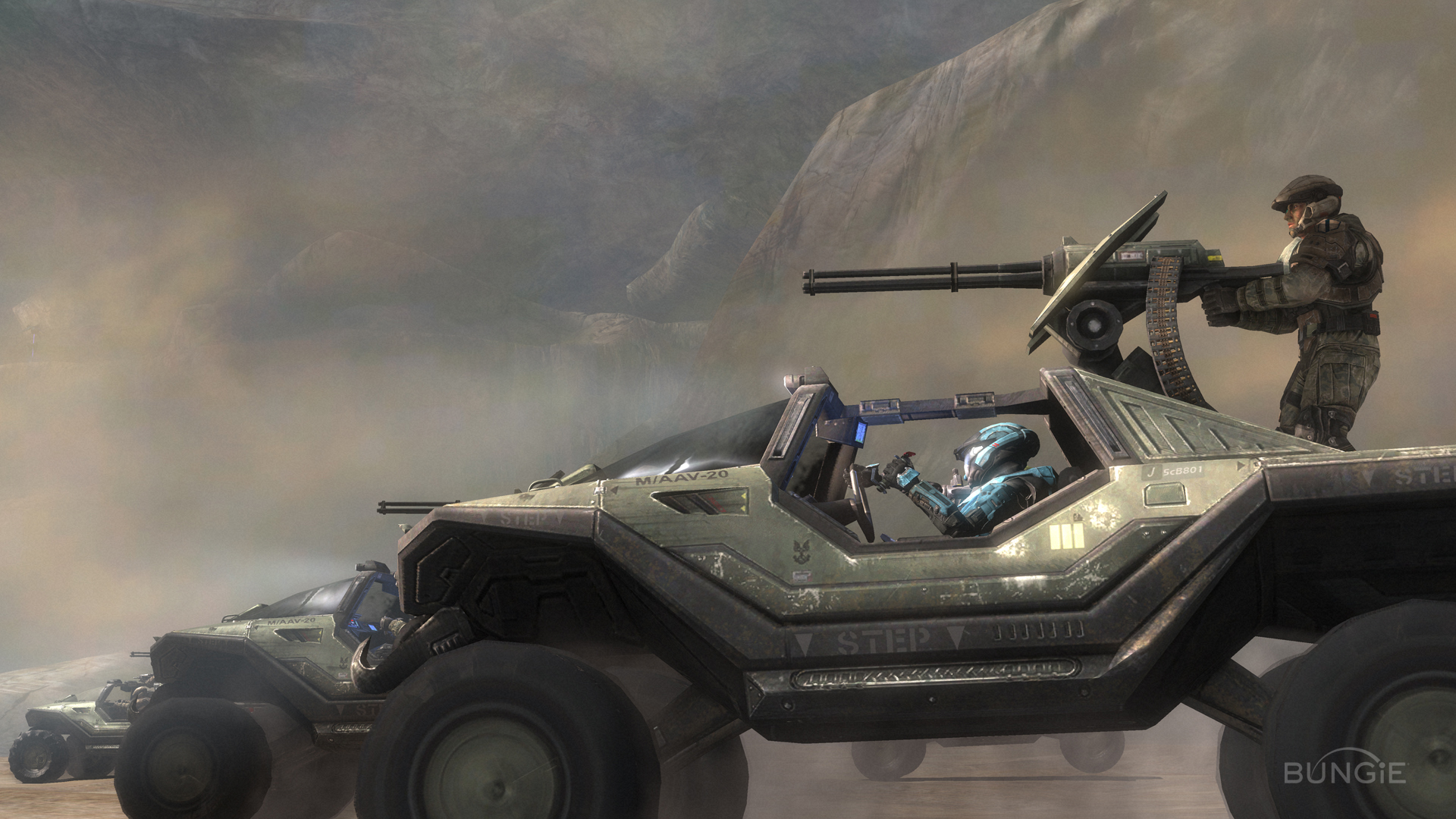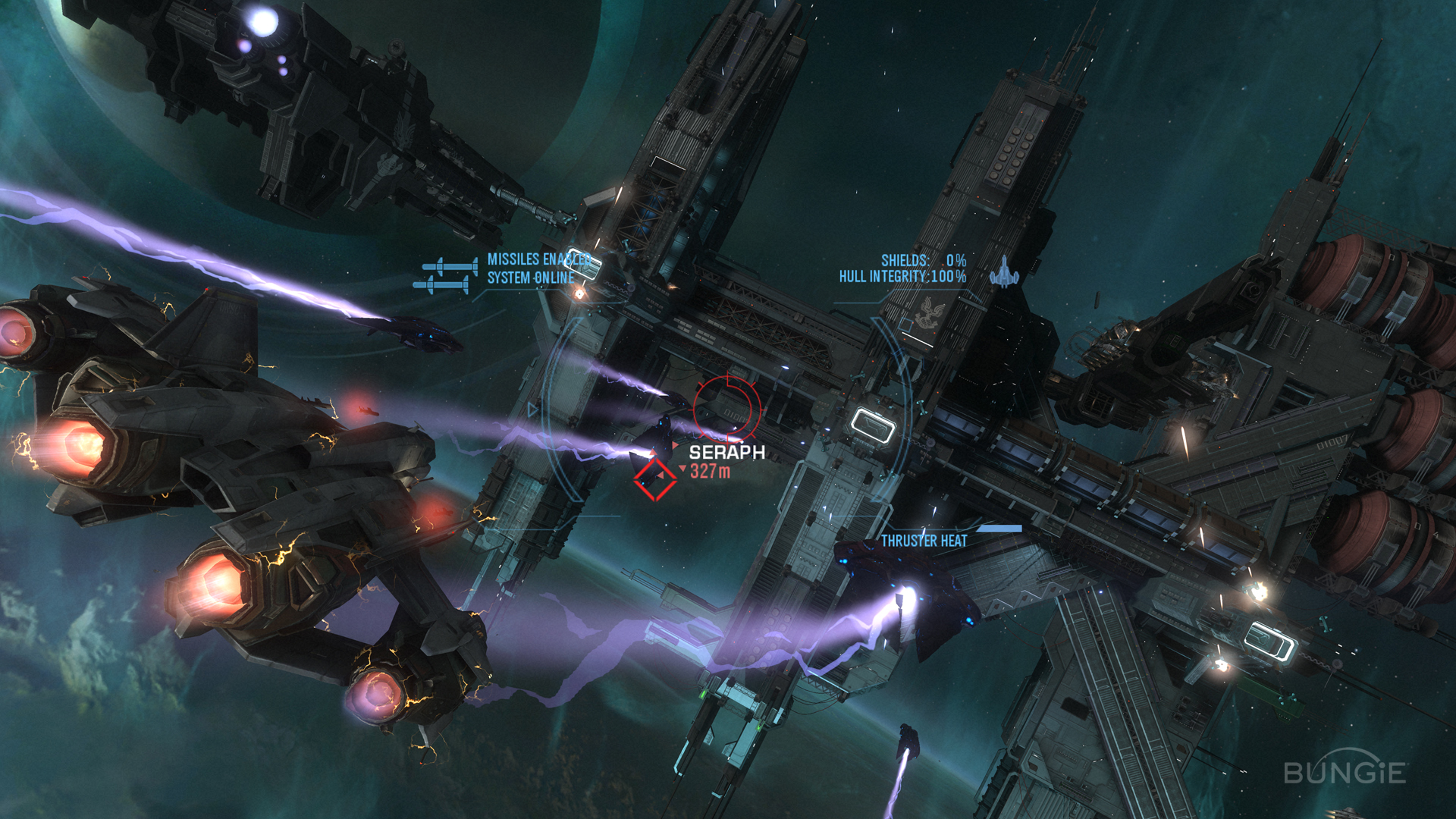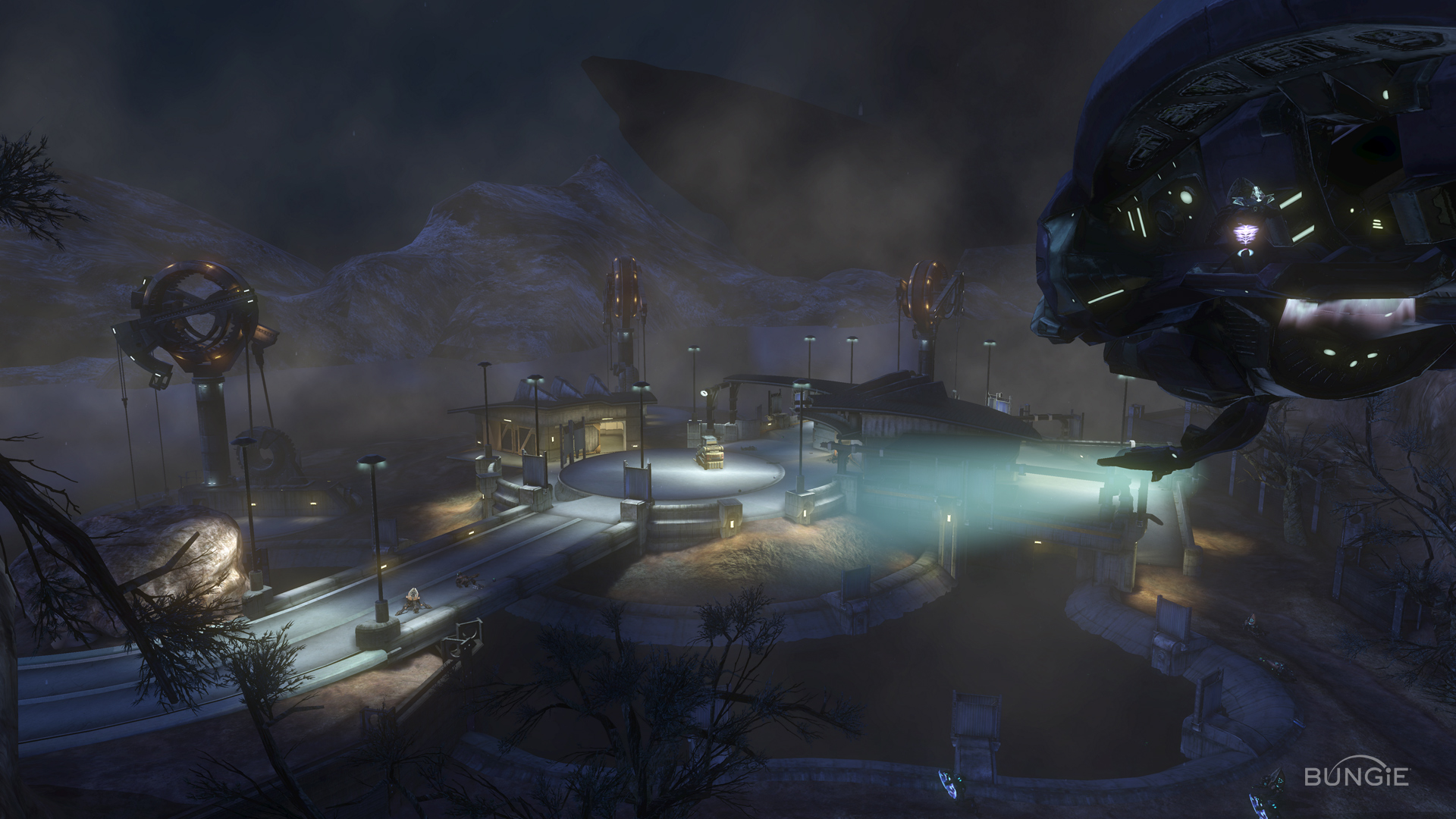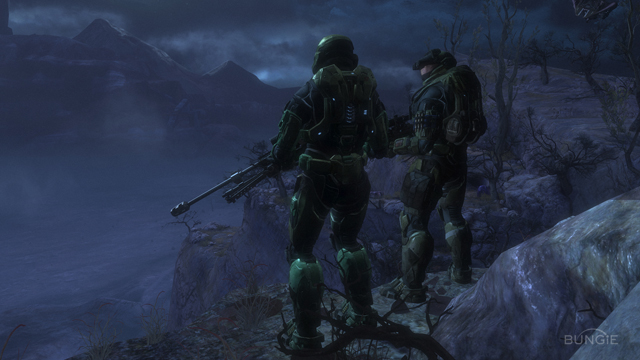Halo: Reach
Filed Under: Gaming

Your friends die. You die. The planet dies. You don’t exactly ‘win the game’ at the end of Halo: Reach’s single-player campaign.
Watching the latest Star Wars film, Rogue One, I was struck by the similarity of its finale to that of Reach1. In Rogue One (spoilers, by the way), the heroes’ self-sacrifice allows Princess Leia to escape with the plans for the Death Star – the film ends almost immediately before A New Hope begins. In Reach, the heroes’ self-sacrifice allows the Pillar of Autumn to escape, with Cortana and the Master Chief aboard, and therefore find the first Halo ring. The last lines of Reach’s script are the first of Halo: Combat Evolved:
Captain Keyes: Cortana, all I need to know is did we lose them?
Cortana: I think we both know the answer to that.
Stories which deploy this conceit have to be prequels – at least, I can’t think of any examples which aren’t – because the only way you can get away with such a bleak ending is if the audience knows how it all works out okay in the end.

Which it does, of course, in three games’ time. Your character’s role is to set up the events of the first game, although you’d be quite confused about the whole affair if you chose Reach as your entry point to the story – it’s more of a whistle-stop farewell tour for Bungie than an open door to new fans. It’s not surprising that the studio’s last outing with the franchise wasn’t aiming to be bigger, better, and ‘more badass’ than the last. Instead, they just wanted to come up with a fitting way to say goodbye. There’s really no way you could play this without having played the other games; it’s just too much of a love letter from Bungie to the series and its fans.
Reach is probably the best Halo game in pure mechanical terms, but it definitely isn’t the most significant. Historically speaking, it didn’t redefine and reinvigorate the console FPS the way the original Halo did. Personally speaking, I didn’t spend hundreds of hours playing it with friends (and other miscreant Xbox Live denizens) like I did with Halo 3, and it wasn’t the first real introduction to first-person shooters that Combat Evolved was to me as a wee person2.

It drops the design ball in a few areas. The newly added armour abilities feel like an undercooked replacement for Halo 3’s equipment items. In that game, you would pick up an item like Bubble Shield and it would go into your single-item equipment slot. After one use it would be expended and you’d have to find another one. Equipment added a valuable extra tactical layer to the game.
Reach’s armour abilities are similar: you can only have one at a time, but you can use it over and over again until you swap it for something else. Some of them are direct analogues to equipment items from Halo 3. For example, there’s one that deploys a bubble shield, and one that briefly turns you invisible. Unfortunately, you’ll hardly ever use those, because one of the other abilities is sprint. Yes, the ability to run fast. The problem with having sprint as one of the armour abilities is that it is always useful, always applicable. It is hard to give up something like that just so you can occasionally spawn a decoy version of yourself. One of the abilities is a jetpack, which feels like a fair trade for sprint, but it’s an exception – the rest are useful once, but rarely twice.

In some ways, the weapon selection tells the same story. The classics make a return, more or less. The Assault Rifle is much the same as ever, albeit with more polys. The Pistol is pleasantly similar to Combat Evolved’s and ODST’s but it is upstaged by the new Battle Rifle substitute: the DMR. It’s an accurate, punchy, general-purpose carbine-type gun that is useful in almost every situation. And if you’re anything like me, you will end up using it in almost every situation. It is the headshot gun. So you have that, and then you have a grab-bag of new weapons, most of which are hard to use effectively, or whose functionality is heavily overlapped by something significantly better. It’s disappointing.
On the other hand, this is the game where Bungie really figured out how to make their weapons feel punchy. There’s more weight to everything, less floatiness. The DMR is the perfect example of this: when you pull the trigger it kicks back at you, the crosshair in the middle of the HUD puffs up, and the sound of the shot rings out. The main ingredient is the sound design, which is strong across the board.

Speaking of audio: the soundtrack is placed front-and-centre as it is in the previous games. Like in ODST, Martin O’Donnell and Michael Salvatori get to depart from the musical identity of the first three games. They do it well, giving Reach a unique feel that references the older games’ soundtracks but is not slavishly imitative of them. Where the music from the trilogy games strives to evoke a nearly religious sense of awe (and sometimes, horror), Reach’s music is forlorn, regretful and more grounded.
It’s not quite as good as ODST’s solemn night-jazz, but what is? Check it out:
There’s good variety in the levels in the campaign and, on the whole, the level design is the strongest in the series. You move from one well-thought-out combat arena to the next, from vehicular section to long-distance engagement to close-quarters firefight to showdown with some particularly challenging combination of enemies. There’s a brief space section which sees you piloting a space fighter around a space station and a Covenant ship, leading into a mid-game crescendo of action. It’s actually a pretty good level, and doesn’t outstay its welcome.
The main thing about Halo level design is that it is all about supporting the game’s AI, which in Reach is the most varied and interesting it’s ever been. The full array of Covenant baddies from the previous games return. Sections which see you fighting Brutes (big burly ape-men) lead into battles against Elites (big burly… lizard3..? men?) – who are faster and scarier to fight than they were in the first two games. The new Skirmishers take the place of sniper-Jackals but are more versatile and highly mobile, able to jump onto the roofs of buildings and cover ground surprisingly quickly and attack from unexpected directions, which is exactly the sort of thing you want to see AI enemies do.
There’s also no Flood, thank god. The body/cosmic horror is missed, but would not fit in thematically anyhow, and the extra Covenant compensate for the lost enemy variety.

And that’s Halo: Reach. There’s more to talk about, of course. When the writing succeeds. When it fails. The skyboxes. The Grunt voices, left un-translated from their original language. The health system. The option to customise your character – and play a lady-Spartan (neat!). The multiplayer. The details. The ending. Oh god, the ending.
Like I said, mechanically speaking it’s the best Halo game. It’s every element from the original game, matured and refined. If I wanted to explain the core gameplay of Halo to someone, I might just point to Reach before Combat Evolved. The catch is that I wouldn’t actually recommend playing through it to that same person – it may be the best, but it’s also the last game someone new to the series should play. The reason is simple:
It’s for fans.

-
Which I replayed last year. Yeah, this post has been sitting in my drafts for a while. ↩
-
The family laptop me and my brother had to run our copy of Halo: Combat Evolved on had limited graphics functionality. It was only years later, when we installed it on a better system, that we discovered the Master Chief’s armour was in fact painted green, not white, and that there were weathered metallic (normal-mapped!) textures on things we thought were completely smooth. On that old computer I remember thinking how cool it was that the game went into slow motion when lots of things were happening all at once, which, in hindsight, was actually just the framerate dropping into single figures. ↩
-
One of Halo’s strengths (which is visible in Bungie’s other work, Destiny and Marathon), is that with the exception of the Brutes the alien design is actually alien. ↩